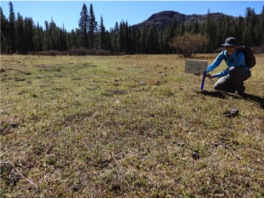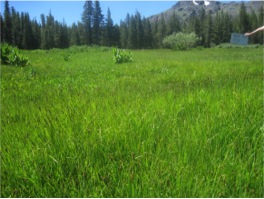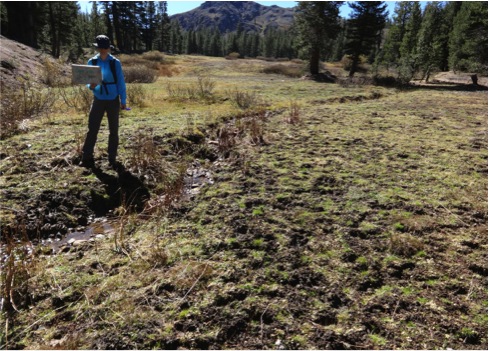When the U.S. Fish and Wildlife Service approved listing of the Yosemite toad and the Sierra Nevada yellow-legged frog last year, that action required the development of a programmatic Biological Opinion to reduce threats to the amphibians. Livestock grazing in the Stanislaus National Forest is one known impact that could be greatly reduced if USFS range managers halt over-grazing, reduce damage to riparian habitat, and prevent the excessive contamination of water by cows.
Sadly, the long-awaited BO appears to promote the status quo except for requiring more monitoring. Requirements to monitor, however, have repeatedly been made a part of past range management plans, but no consequences occur when monitoring doesn’t get done.
CSERC continues to do vigilant field monitoring – visiting over 50 meadows last year to document “before” and “after livestock” impacts. Julia of our staff led the efforts and compiled CSERC’s monitoring results into a 2014 Grazing Report that was provided to the Forest Service and to the USFWS. As the stark contrast in the two top photos shows, our monitoring proves that livestock often degrades meadow habitat so severely that far more resources than just amphibians suffer.




